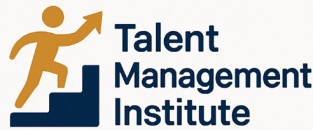Understanding the Role of Human Resources in Staffing
Understanding the Strategic Role
The role of human resources in the staffing process is pivotal to cultivating an effective talent management strategy. A well-structured human resource department serves as the backbone of an organization, ensuring the right people are hired, nurtured, and retained. The intricate dance between the staffing agencies, recruiting efforts, and talent acquisition strategies requires a deft touch to balance business objectives with personnel services.
Human resources staffing encompasses a wide array of activities, from identifying the optimal job candidates to integrating them effectively into the company culture. This effort involves the careful consideration of not just the skills and experience of the potential hires but also their alignment with the long-term strategic goals of the business. In bustling markets like Los Angeles, where talent is abundant yet competition is fierce, companies may enlist the help of staffing agencies to streamline this process and ensure the hire of top performers.
Moreover, human resource managers play a critical role in implementing staffing solutions that are forward-thinking and adaptable. By keeping abreast of future trends in recruitment and leveraging data analytics, businesses can better define their approach to acquiring and retaining talent. Effective management of human resources involves proactive recruitment measures that can anticipate the dynamic needs of the industry.
In essence, understanding and optimizing human resources staffing is central to fostering a robust talent management framework. For more insights on how to enhance workforce potential, consider exploring workforce potential strategies within the context of talent management programs.
Key Challenges in Human Resources Staffing
Addressing Common Obstacles in Human Resources Staffing
In the realm of human resources staffing, organizations frequently encounter a variety of challenges that can impede effective talent management. These hurdles are not only about finding the right candidates but also about aligning them with the company's goals and culture. Understanding these challenges is crucial for any company looking to optimize its staffing processes.
Identifying and Attracting Qualified Candidates
One of the primary challenges in staffing is identifying and attracting qualified candidates. With the competitive nature of the job market, companies often struggle to unlock the potential of absolute works jobs in talent management. This involves not only sourcing candidates with the right skills and experience but also ensuring they align with the company culture and values.
Balancing Speed and Quality in Hiring
Another significant challenge is balancing the need for speed in hiring with the quality of hires. In a fast-paced business environment, the pressure to fill positions quickly can lead to compromises in the hiring process. Companies must develop strategies to ensure they are not sacrificing quality for speed, which can lead to long-term issues in talent management.
Navigating the Complexities of Recruitment
Recruitment itself is a complex process involving multiple stages, from job postings to interviews and final selections. Staffing agencies and executive search firms can provide valuable support, yet the coordination between internal human resources and external agencies often requires careful management. Ensuring clear communication and alignment of objectives between all parties is essential for successful recruitment outcomes.
Managing Costs and Resources Effectively
Cost management is another critical aspect of human resources staffing. The expenses associated with recruiting, hiring, and onboarding new employees can be substantial. Companies need to implement cost-effective staffing solutions that do not compromise the quality of hires. This often involves leveraging technology and data analytics to streamline processes and make informed staffing decisions.
Ensuring Long-Term Employee Retention
Finally, while acquiring talent is essential, retaining it is equally important. High turnover rates can disrupt business operations and incur additional costs. Effective retention strategies, such as career development opportunities and a supportive company culture, are vital components of a successful talent management strategy.
Strategies for Effective Talent Acquisition
Developing a Strong Talent Acquisition Strategy
Crafting an effective approach to attracting top candidates is a pivotal aspect of talent management for any business. Organizations must focus on aligning their recruitment strategies with their human resources objectives, ensuring that they can efficiently source and hire the best individuals for the job. An integral part of this process includes clearly defining the roles and responsibilities required for each position. This means not only understanding the immediate needs of the company but also considering long-term business goals. By keeping an eye on future developments, organizations can ensure they hire human potential that is not just suitable for current projects but can grow with the company. It's essential for managers and human resources teams to work closely with staffing agencies and talent acquisition professionals. Collaborating with staffing agencies can provide businesses access to wider networks of potential job seekers and more specialized recruiting services. Different agencies may possess unique sets of competencies, like staffing solutions specific to executive search or personnel services tailored for niche markets. Moreover, the company culture plays a significant role in attracting talent. Prospective hires are often drawn to businesses where they can see themselves thriving in the work environment. A clear and compelling portrayal of the company culture during the recruiting process helps in attracting candidates who not only fit the role but also align with the organization’s values. Additionally, utilizing technology and digital platforms can be incredibly beneficial. Companies can take advantage of online recruiting tools and platforms that streamline the search jobs process, allowing for faster and more precise matching of the right talent to the right roles. This includes tapping into sophisticated Applicant Tracking Systems (ATS) and leveraging social media for recruitment efforts. For those businesses facing challenges finding a manager human resource fit, consider exploring more specialized recruitment resources. You can find more insights on this topic by visiting Finding the right managerial fit: Key Considerations in Talent Management. In a city like Los Angeles, where competition for skilled professionals is fierce, companies often benefit from a more strategic approach to talent acquisition. While hiring locally can be beneficial, it’s also worth looking beyond geographical boundaries to find the best fit for your company. Overall, effective talent acquisition requires a balance of strategic planning, leveraging the right resources, and fostering a supportive company culture. By focusing on these elements, organizations can successfully attract, hire, and retain the talent necessary to achieve their business objectives.The Importance of Employee Retention in Talent Management
The Significance of Employee Retention in Building Talent Strength
Employee retention is a cornerstone of talent management. Achieving long-term success in human resources staffing requires not only attracting top talent but also keeping them engaged and committed to the organization. High turnover rates can disrupt business operations and incur significant costs associated with recruiting, training, and lost productivity. It's essential for a human resource manager to develop strategies that create a culture where employees feel valued and motivated. This involves understanding their needs and aspirations, offering competitive benefits, and fostering a positive company culture. Regularly conducting employee surveys can provide insights into potential retention issues and help managers address them proactively. Moreover, providing employees with opportunities for career advancement and personal growth is crucial. Investing in training and development not only enhances employees' skills but also demonstrates a company’s commitment to their professional growth. This approach helps to cultivate loyalty and decreases the likelihood of employees seeking job opportunities elsewhere. Incorporating these strategies into staffing solutions can lead to a more stable and satisfied workforce, reducing the need for frequent hiring. This ultimately supports the firm's talent acquisition efforts by ensuring that the personnel services are not just about hiring human resources but also about nurturing and maintaining them. For staffing agencies and recruitment agencies, advising clients on employee retention practices can elevate their services, fostering long-lasting partnerships. They can guide companies in Los Angeles and beyond in establishing retention programs that align with their business objectives. As organizations strive to hire top candidates, retaining them becomes equally vital to ensuring a proficient and competitive team that contributes to the company's success in the long term.Utilizing Data and Analytics in Staffing Decisions
Leveraging Data Insights for Staffing Efficiency
In the realm of human resources staffing, data and analytics have become invaluable allies. They empower human resources professionals to make informed decisions when it comes to recruiting and placing top talent. By analyzing the vast amounts of data generated through applications, job postings, and online interactions, staffing managers can streamline the recruitment process and enhance the overall efficiency of talent acquisition. One significant advantage is the ability to track and assess candidate behavior and preferences. Understanding these patterns enables staffing agencies and recruitment managers to tailor their strategies and improve the quality of hires. For businesses, this means accessing a more refined pool of candidates, potentially leading to a more suitable hire human resource. Moreover, predictive analytics can forecast hiring trends and labor market demands. By using such predictive models, companies can anticipate staffing needs more accurately and proactively address potential shortages in specific job roles. This proactive approach not only supports sustainable growth but also contributes to long-term success in talent management. Additionally, data-driven insights are instrumental in improving company culture by ensuring a good fit between candidates and the organizational environment. This alignment not only aids in employee retention but also enhances satisfaction at work, fostering a thriving workplace atmosphere. In essence, harnessing the power of data and analytics in human resources staffing offers an integrated approach to recruitment. It transforms traditional staffing solutions into dynamic, evidence-based practices that benefit both job seekers and companies alike. As the business landscape evolves, so too should our methods for finding, hiring, and managing talent.Future Trends in Human Resources Staffing
Embracing Technological Advancements in HR Staffing
As we navigate through the ever-evolving landscape of human resources, one can’t ignore the revolutionary impact of technology on staffing decisions and talent management. Human resource departments and staffing agencies are increasingly turning to advanced tools and software to streamline the recruitment process.- Artificial Intelligence: AI is transforming how businesses search for and hire top candidates. AI-powered tools help human resource managers analyze vast volumes of candidate data, reducing time spent on manual sorting and increasing precision in matching candidates with job descriptions.
- Automation and Robotics: These technologies are being employed to automate repetitive tasks, such as scheduling interviews or sending out reminders, freeing up more time for HR managers to focus on strategic initiatives.
Data-Driven Recruitment Strategies
Data and analytics have become crucial components for making informed staffing decisions. Human resources departments are harnessing the power of data to predict future staffing needs and develop more effective talent acquisition strategies.- Predictive Analytics: By analyzing past hiring patterns and market trends, companies can forecast future hiring needs and adjust their strategies accordingly. This proactive approach helps human resources adjust staffing levels more efficiently.
- HR Analytics Tools: These tools allow staffing agencies and HR departments to track metrics like time-to-hire, cost-per-hire, and employee turnover rates, enabling more strategic decision-making in recruitment and staffing solutions.
The Rise of Remote Work and Flexible Staffing Solutions
The COVID-19 pandemic has permanently altered the traditional work model, making remote work a staple for many organizations. In response, staffing agencies and businesses are offering more flexible work arrangements to attract and retain talent, including part-time jobs, remote positions, and flexible hours.- Virtual Recruitment: With job seekers no longer bound by geographical constraints, companies can broaden their candidate pool, hiring top talent from anywhere globally. Virtual recruitment tools and platforms are now essential for reaching a diverse group of candidates.
- Flexible Work Arrangements: Adopting different working models allows companies to cater to the varied needs of their workforce, promoting a better work-life balance and enhancing job satisfaction.













